iOBD2
IOBD2 is an app for your car. It turns your Phone/Pad into an advanced display for your engine data.
iOBD2 Bluetooth OBD2 EOBD Auto Scanner For iPhone/Android By Bluetooth is a one of our iOBD2 Tools, you can buy iOBD2 Bluetooth OBD2 EOBD Auto Scanner For iPhone/Android By Bluetooth from svcidiag.com.
Wholesale Top quality VAS6154, GM Tech2, VCM II For Ford, Handy Baby II Car Key Chip Copier, CDP DS150
images of iOBD2 Bluetooth OBD2 EOBD Auto Scanner For iPhone/Android By Bluetooth


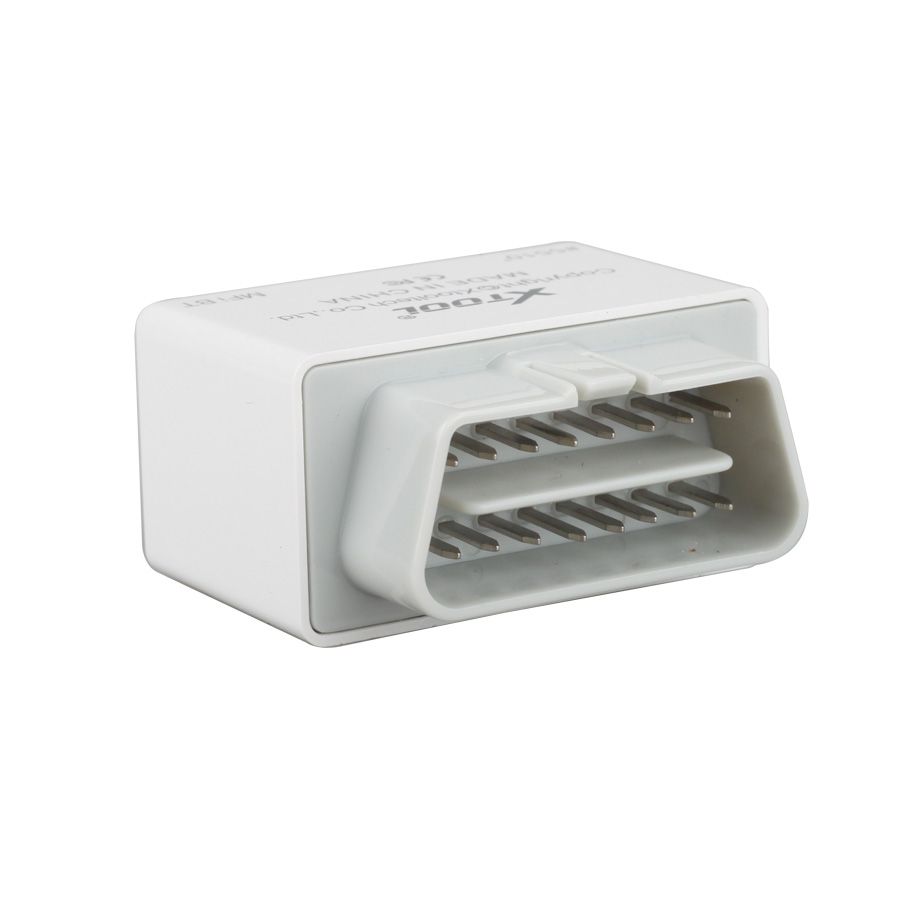

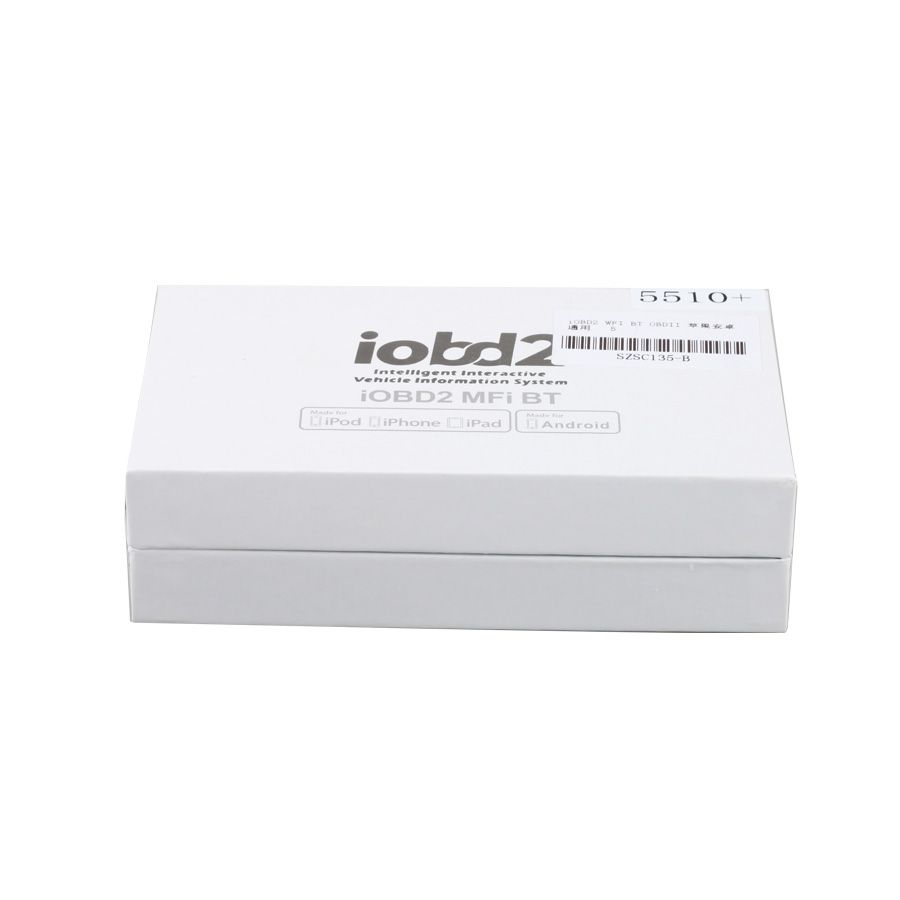
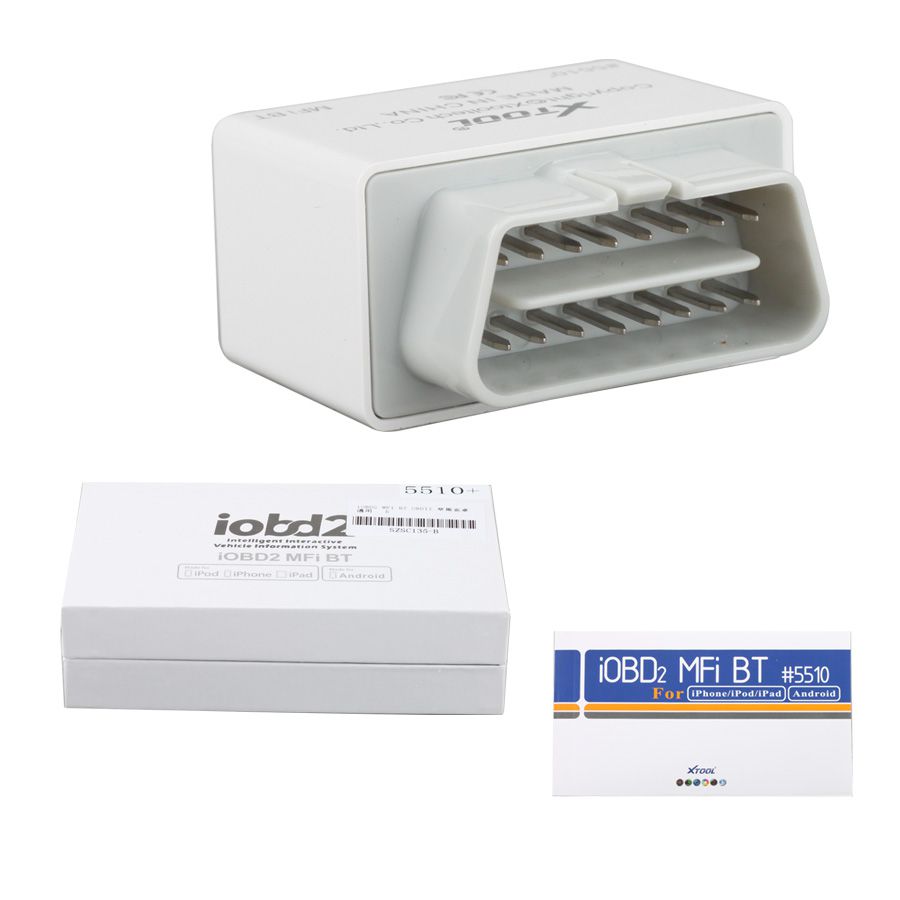
iOBD2 Bluetooth OBD2 EOBD Auto Scanner for iPhone/Android By Bluetooth
Product Description
Please verify that your vehicle is OBD-II/EOBD compliant before purchasing!
Get the benefit of multiple gauges without the overwhelming clutter and the expense! (Note: Not all OBD-II compliant vehicles have support for all parameters)
Language supported: English only
iOBD2 Supported OBDII Protocols:
1. ISO15765-4 (CAN)
2. ISO14230-4 (KWP2000)
3. ISO9141-2
4.J1850 VPW
5.J1850 PWM
iOBD2 Vehicle Compatibility
iOBD2 works with most 1996 and & newer model year cars and light trucks (OBDII & CAN)-domestic and imported.
Supported Device and APP


IOBD2 APP can be searched and downloaded at the Apple store and Google Play Store.
Bluetooth Connection
iOBD2 can be connected with all devices based on Apple iOS and Android OS with Bluetooth.
iOBD2 Scanner Function:
1. Performance Gauges:
1). Engine speed
2). Corrected vehicle speed
3). Open/closed loop
4). Boost/vacuum combo gauge
5). Acceleration (and braking)
2. Fuel Economy Gauges:
1). Inst. fuel economy
2). Avg fuel economy
3. Engine Gauges:
1). Timing (spark advance)
2). Engine coolant temp.
3). Intake air temp.
4). Ambient air temp.
5). Manifold absolute pressure
6). Mass air flow
7). Fuel trims, short and long term
8). Percent engine load
9). Catalyst temp.
10). Fuel pressure
11). Lambda gauge
12). Air/fuel ratio
iOBD2 Diagnostic Functions:
Read DTC: Read the current DTC that engine has stored, and DTC info.
Clear DTC: Clear all the current DTC.
Display DTC Definition: Show all the definition and explanation of DTCs.
Guide Maintenance:Guide how to maintenance the problems of car according to the trouble codes.
Live data: Read all the running parameters that related to the ECU.
Freeze frame data: OBD system will record the system running parameters related to the malfunction the moment when it occurred at the same time when it set the DTC. And this group of data is called freeze frame data.
Readiness test: Readiness reflects the status that all the valid diagnostic functions. The diagnostic functions are referring to the important monitoring functions in OBD system, e.g. Oxygen sensor monitoring, Oxygen sensor heater monitoring, and EGR system monitoring, etc. These diagnostic functions are closely related to the engine emission control.
Read vehicle info: Read vehicle info such as Vehicle Identification Number(VIN), Calibration IDs(CALID) and Calibration Verification Number (CVN).
Oxygen Sensor test: This service is to allow access to the on-board oxygen sensor monitoring test results. The same information may be obtained by the use of [Mode 6 test].
Mode 6 test: This service is to allow access to the results for on-board diagnostic monitoring tests of specific components/systems that are not continuously monitored. Examples are catalyst monitoring and the evaporative system monitoring.
EVAP System Test: The purpose of this service is to enable the external test equipment to control the operation of an on-board system, test or component.
My Dashboard
Idle Mode: Engine rotational speed, water temperature, battery voltage, Air-intake temperature, Instant fuel consumption (static),average fuel consumption, Ever wished you had your own customizable gauges, showing only the data you were interested in
Cruise Mode: Vehicle speed, the current engine load, water temperature, vehicle travel time, vehicle travel average speed, Continuous running mileage, instant fuel consumption(dynamic), ever wished you had your own customizable gauges, showing only the data you were interested in.
Cruise Mode: Vehicle speed, the current engine load, water temperature, vehicle travel time, vehicle travel average speed, Continuous running mileage, instant fuel consumption(dynamic), ever wished you had your own customizable gauges, showing only the data you were interested in.
Sport Mode: Show you the engine rotational speed, vehicle speed, water temperature.
Performance Mode: Show you the vehicle speed, capacity, torque, horsepower and you can also customize your gauges here.
Driving Track (Racetrack Mapping)
It is to show the driving track of the vehicle to give data and foundation for reference. Open the Location Services of the mobile, connect iobd2 to the vehicle and open iobd2 APP, choose "My Dashboard", and it will record the track of the vehicle. Quit "My Dashboard" then it will stop recording the track of the vehicle.
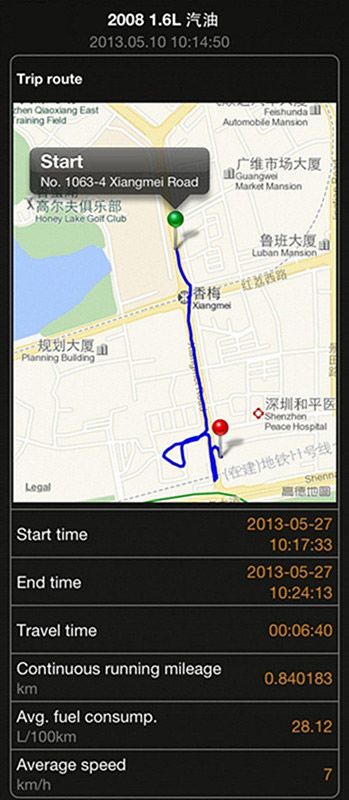

Performance Test
The Performance Test Function Includes:
Accelerate/Decelerate Test: Test acceleration/ deceleration process time and distance.
0 to 400m Acceleration Test: test spend time from 0 to 400 meters.
Setting
It allows users to change the unit of temperature, mileage, vehicle speed, fuel, fuel consumption, torque and horsepower, set the alarm for over speed, fatigue driving and water temperature, and set parameters of vehicle weight, fuel consumption coefficient and vehicle speed coefficient according to their needs on [Customize My Dashboard].
History
It is to save and review the recorded diagnostic data of the tested cars, such as live data, freeze frame data, trip record and my dashboard data. The data can be shared to Facebook and Twitter .
If you meet any problem when testing your car,please give us a feedback according to the below steps, an engineer will reply you Asap usually within 1-2 working days.

Package List:
Hardware: iOBD2 Adapter, User Manual
Software: iOBD2 APP-Free (Download Manually)
Screenshot
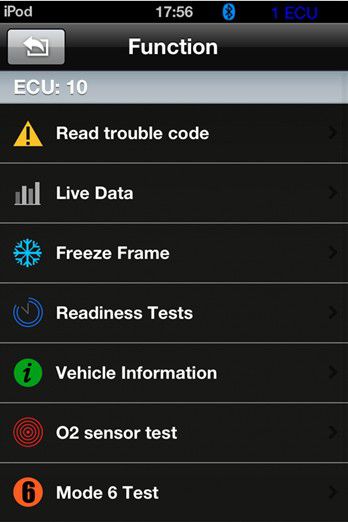





Does My Car Have OBD-II?
All cars and light trucks built and sold in the United States after January 1, 1996 were required to be OBD II equipped. In general, this means all 1996 model year cars and light trucks are compliant, even if built in late 1995.
Two factors will show if your vehicle is definitely OBDII equipped:
1) There will be an OBD II connector located under or around the dashboard, and
2) There will be a note on a sticker or nameplate under the hood: "OBD II compliant".
Where is the connector located?
The connector must be located within three feet of the driver and must not require any tools to be revealed. Look under the dash and behind ashtrays.
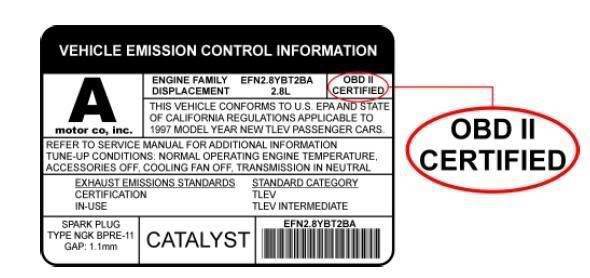

The Three Flavors of OBD II
While the parameters, or readings, required by OBD II regulations are uniform, the auto manufacturers had some latitude in the communications protocol they used to transmit those readings to scanners. Naturally, each felt they had the one true way, so we have three different OBD II communications protocols in use.
While the parameters, or readings, required by OBD II regulations are uniform, the auto manufacturers had some latitude in the communications protocol they used to transmit those readings to scanners. Naturally, each felt they had the one true way, so we have three different OBD II communications protocols in use.
What Communications Protocol does my vehicle use?
As a rule of thumb, GM cars and light trucks use SAE J1850 VPW (Variable Pulse Width Modulation). Chrysler products and all European and most Asian imports use ISO 9141 circuitry. Fords use SAE J1850 PWM (Pulse Width Modulation) communication patterns.
There are some variations among captive imports such as the Cadillac Catera, a German Opel derivative, which uses the European ISO 9141 protocol.
On 1996 and later vehicles, you can tell which protocol is used by examining the OBD II connector:
J1850 VPW--The connector should have metallic contacts in pins 2, 4, 5, and 16, but not 10.
ISO 9141-2--The connector should have metallic contacts in pins 4, 5, 7, 15, and 16.
J1850 PWM--The connector should have metallic contacts in pins 2, 4, 5, 10, and 16.
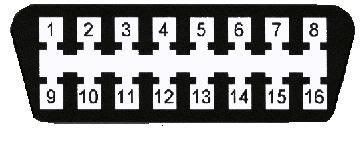

Go to Buy: iOBD2 Bluetooth OBD2 EOBD Auto Scanner For iPhone/Android By Bluetooth